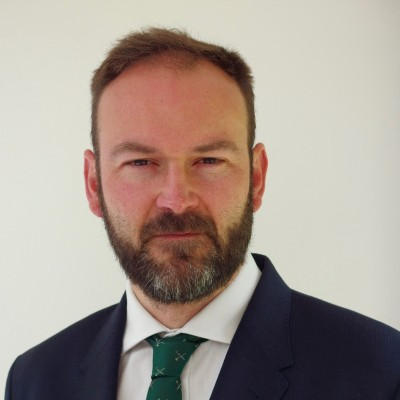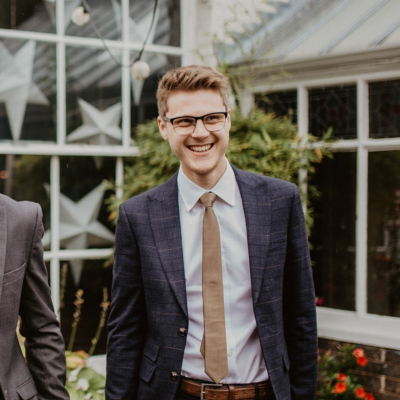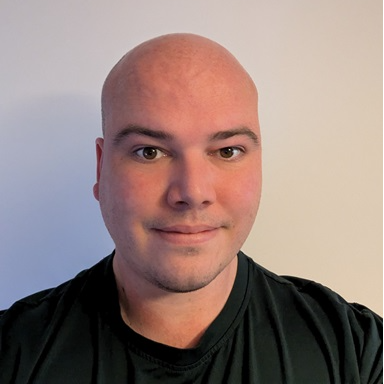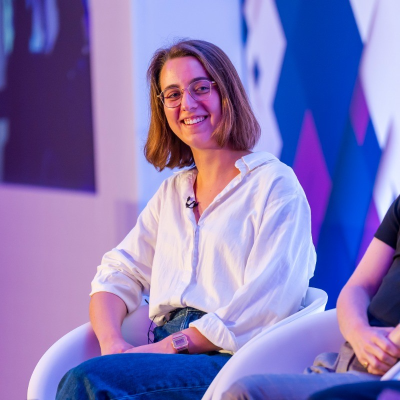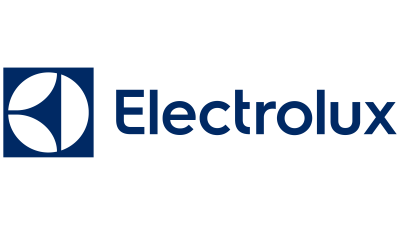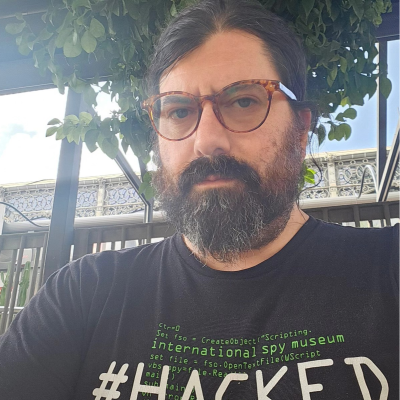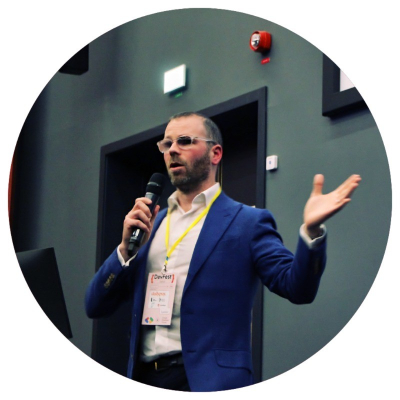CONFERENCE DAY TWO
Day 2 Sessions
8:30 am - 9:30 am
Registration & Coffee
9:15 am - 9:30 am
Opening Chair Remarks
Alistair McLaurin -
CTO, Cloud and Light Limited, formally Head of AWS Platform,
Former-HSBC
9:30 am - 10:00 am
PRESENTATION: Scaling & Standardizing Patterns Led Observability at JPMorgan Chase & Co
Gavin McCallum -
Observability Architect - Engineering Platforms and Experience,
JP Morgan Chase & Co.
“Patterns Led Observability” offers out-of-the-box patterns that can be adopted across all layers of the Observability Value Pyramid, which allows our internal customer development teams ease of function to consume and get moving quickly. Standardizing development practices with leveraging AI and automation technologies, whilst maintaining careful control over costs. This session will delve into the unique observability challenges and opportunities faced at JPMorgan Chase - with upwards of 40k internal developers ready and eager to consume our tooling. Leveraging standardized practices to streamline the adoption of strategic tooling, ensuring consistent and
efficient observability across complex systems, leveraging proven cost effective methods for integration that scales to volumes in the multi-TB-per-day range.
Patterns Led Observability in Financial Services: Understanding the specific needs and constraints of the financial sector and which observability patterns can address them.
Strategic Tooling and Standardization: How standardized practices facilitate the seamless integration of observability tools, driving efficiency and reducing operational complexity.
Leveraging AI and Automation: Exploring the role of AI and automation in enhancing observability, from predictive analytics to automated incident response.
Cost Control Strategies: Techniques for balancing advanced observability capabilities with budgetary constraints, ensuring cost-effective implementation and operation.

Gavin McCallum
Observability Architect - Engineering Platforms and ExperienceJP Morgan Chase & Co.

10:00 am - 10:30 am
PRESENTATION: Streamlining Service Management through Resilient SRE Practices and Reliable Observability
Oscar Bransbury-Beare -
Principal SRE & Observability Consultant,
Capacitas
Rajasekaran Selvarajan - Head of CloudOps & SRE Services, JD Sports Fashion plc
JD Sports, a global retail leader with thousands of physical stores and rapidly growing digital channels, has undergone a major shift within technology towards composable commerce. This transformation has placed increasing pressure on technology teams to innovate faster, deliver seamless customer experiences, and support a continuously expanding portfolio of services — often with limited resources.
In this session, Rajasekaran Selvarajan (JD Sports) and Oscar Bransbury-Beare (Capacitas) share how the SRE function became a catalyst for scalability, stability, and speed within JD Sports’ evolving technology landscape. The talk explores how resilient SRE practices and mature observability have enabled JD Sports to deliver continuous change while maintaining operational excellence.Key topics include:
- Automating frameworks to enable early and frequent testing, shifting reliability practices left, and unlocking SRE to work on new processes alongside engineering.
- Centralising risk, incident, and problem management through SRE principles to bridge the gap between service management and engineering disciplines.
- Mature Observability capability, underpinned by service catalogues, SLOs, and NFRs — simplifying onboarding for new services.
- Embedding observability from day one to eliminate implementation blockers and ensure fit-for-purpose monitoring and alerting.
- Establishing a central Centre of Excellence to unify processes, tooling, and principles — driving efficiency, consistency, and cost savings.
10:30 am - 11:00 am
Morning Coffee Break
11:00 am - 11:45 am
PANEL DISCUSSION: Controlling Observability Spend
Prakriti Karthauser -
Head of Infrastructure Engineering,
Legal and General
Thomas Barnes - Head of Observability, Worldpay
Marta Lima - Engineering Lead - Observability, Wise
Alistair McLaurin - CTO, Cloud and Light Limited, formally Head of AWS Platform, Former-HSBC
As observability data volumes explode, so do the costs - leaving many organizations struggling to balance visibility with financial sustainability. This panel explores how engineering, platform, and finance leaders are working together to control observability spend without sacrificing critical insights. We’ll discuss strategies for smarter data collection, tooling consolidation, and aligning observability investments with business value.
- Understanding where observability costs originate — and how to make them visible.
- Tuning telemetry pipelines to reduce volume and noise.
- Choosing between high-fidelity data and cost-effective sampling.
- Evaluating ROI across vendors, open-source tools, and internal platforms.
- Fostering a culture of cost-awareness among engineering teams.
11:45 am - 12:15 pm
PRESENTATION: Enhancing Observability by Empowering Developers with an Open‑Source Internal Developer Platform (IDP)
Kristina Kondrashevich -
SRE Product Manager,
Electrolux
In this session, Kristina will show how Electrolux built an internal developer platform (IDP) that integrates observability and runbook knowledge into every workflow. By shifting incident resolution upstream, developers own more of the troubleshooting, and SREs get time back for high-impact projects. Specifically, the session will cover:
- Designing an IDP that bakes in observability from the start, ensuring every piece of infrastructure is monitored and auditable by default.
- Handing off incident triage and resolution to development teams.
- Freeing your SRE team from routine tickets so they can focus on innovation.
- Decentralizing tribal knowledge by embedding it into your platform.
- Why open source in big companies can provide extra capacity and fuel team motivation.
12:15 pm - 1:15 pm
Lunch
1:15 pm - 1:45 pm
PRESENTATION: Scaling Down and Cleaning Up: Managing Legacy Systems at GroupOn
Nick Simmonds -
Infrastructure Engineering Manager,
Groupon
GroupOn operates as a much leaner business today as a public company than in its days as a unicorn startup. As the company has scaled down, the engineering team faces the challenge of maintaining and reengineering a system built without cost constraints to be more cost conscious and sustainable. This session explores how GroupOn is tackling legacy complexity, consolidating tooling, and finding the right balance between buying and building to right-size for the future.
- How GroupOn’s tech stack became too big to manage efficiently.
- The hidden costs of legacy tooling in smaller orgs.
- Strategies for consolidation, integration, and simplification.
- What we’re buying vs. what we’re building.
- Lessons learned from cleaning up a system built for scale.
1:45 pm - 2:15 pm
PRESENTATION: How The Gym Group is Building Resilient SRE Culture through Full-Spectrum Observability
Colm Campbell -
Head of Engineering,
The Gym Group
Culture is as critical to reliability as any tool or dashboard. This session explores how The Gym Group is building an SRE culture rooted in real-time observability - where teams are empowered to detect, respond, and learn from incidents quickly and proactively. We'll consider some insights from other fields — safety science, software engineering, UX/UI and psychology — which may support SRE teams in tuning up their tools and ways of working, to drive effectiveness and resilience.
- Creating shared ownership of reliability among SRE and other engineering disciplines.
- Embedding observability in the daily routine of developers and operators.
- Using real-time and retrospective insights to inform decisions and reduce burnout.
- Managing SRE cognitive load to reduce TTD and TTR.
- Beyond blameless reviews: how psychological safety enables incident prevention.
2:15 pm - 2:45 pm
Afternoon Coffee Break
2:45 pm - 3:15 pm
PRESENTATION: SRE Superpowers: From Firefighting to Force Multiplication with AI
Daniel Murphy -
Head of SRE,
PwC
Modern Site Reliability Engineers (SREs) are drowning in alert fatigue, repetitive toil, and late night pages. But what if you could flip the script using AI? In this talk, we explore how a solo engineer empowered their SRE practice by building an AI-driven ChatOps bot and anomaly detector - automating the triage of alerts, generating root-cause hints, and triggering runbooks autonomously. What started as a survival tactic evolved into a transformative shift: from reactive firefighting to proactive reliability engineering. Alongside this, the speaker delves into how solo side-projects using code-generation agents and no-code orchestrators helped fast-track innovation,
proving that individual contributors can ship impactful tools without a team. The session rounds out with an honest discussion of what it takes to bring these innovations into a larger engineering culture—navigating the dynamics of engineer-led experiments, middle-management resistance, and the need for CTO-level sponsorship.
- Break the Cycle of Toil: Learn how AI-driven bots can handle alert triage, automate runbooks, and reduce MTTR without sacrificing human oversight.
- Proactive Reliability through Automation: See how anomaly detection and context-aware assistants can help SREs transition from reactive responders to strategic infrastructure engineers.
- Empowering the Solo Engineer: Explore how individual contributors can prototype and deploy high-impact tools using AI agents and no-code workflows.
- Navigating Organizational Friction: Understand the political and cultural hurdles of implementing AI-based tools in different organizational layers (engineer-led, manager-skeptical, CTO-backed).
- Blueprint for Bottom-Up Innovation: Get a practical framework for piloting and scaling AI-based SRE tools inside complex engineering orgs.
